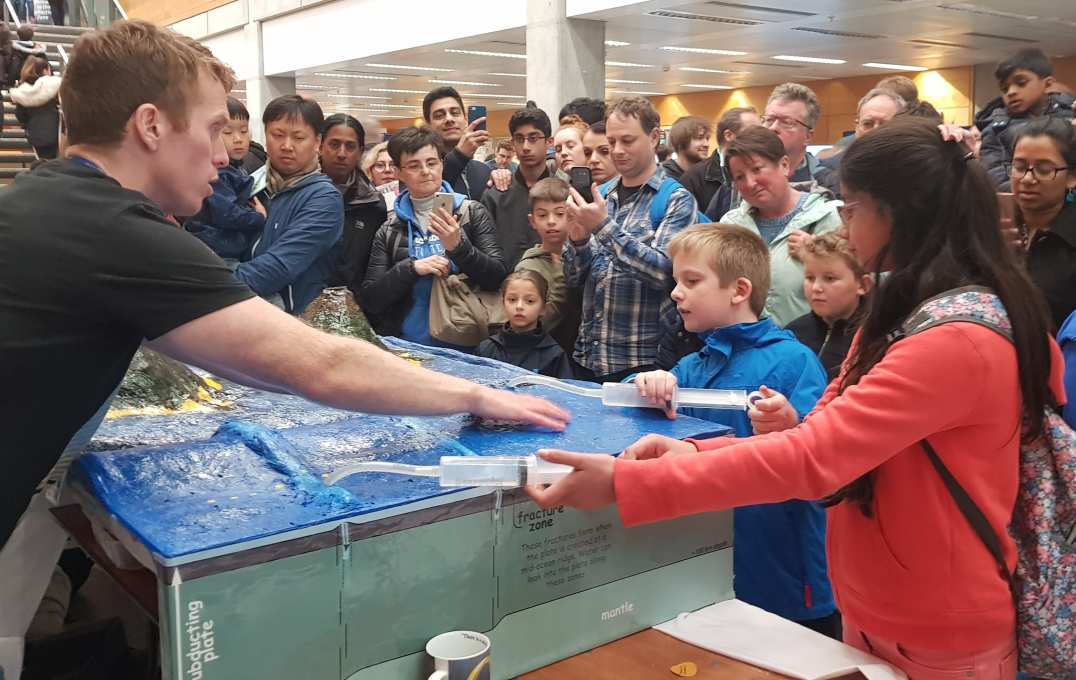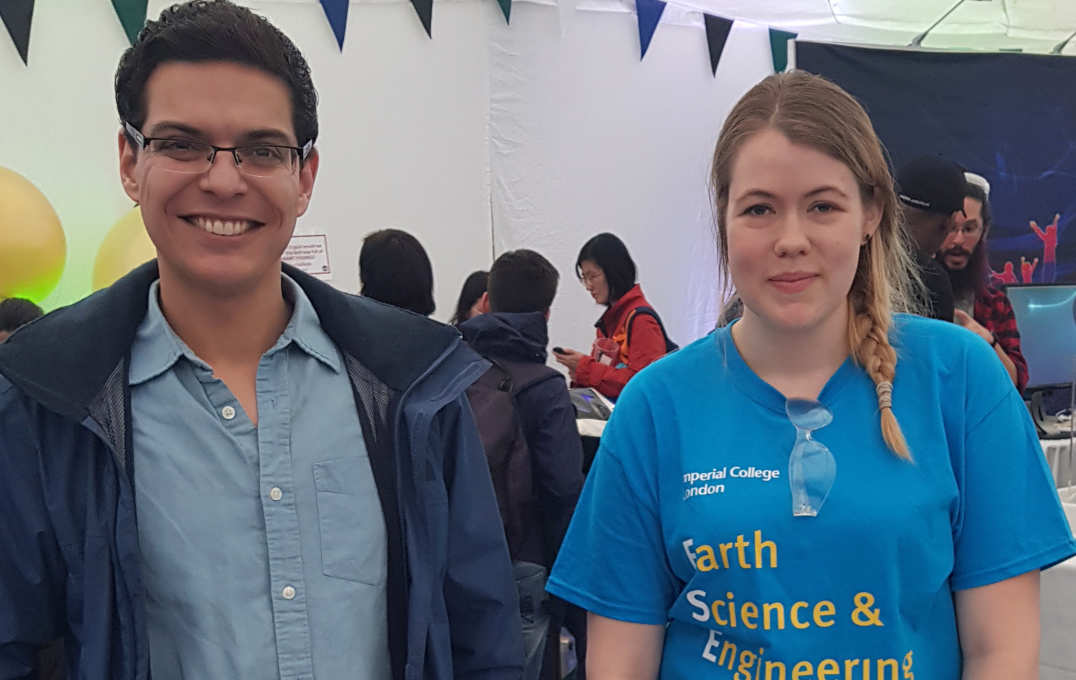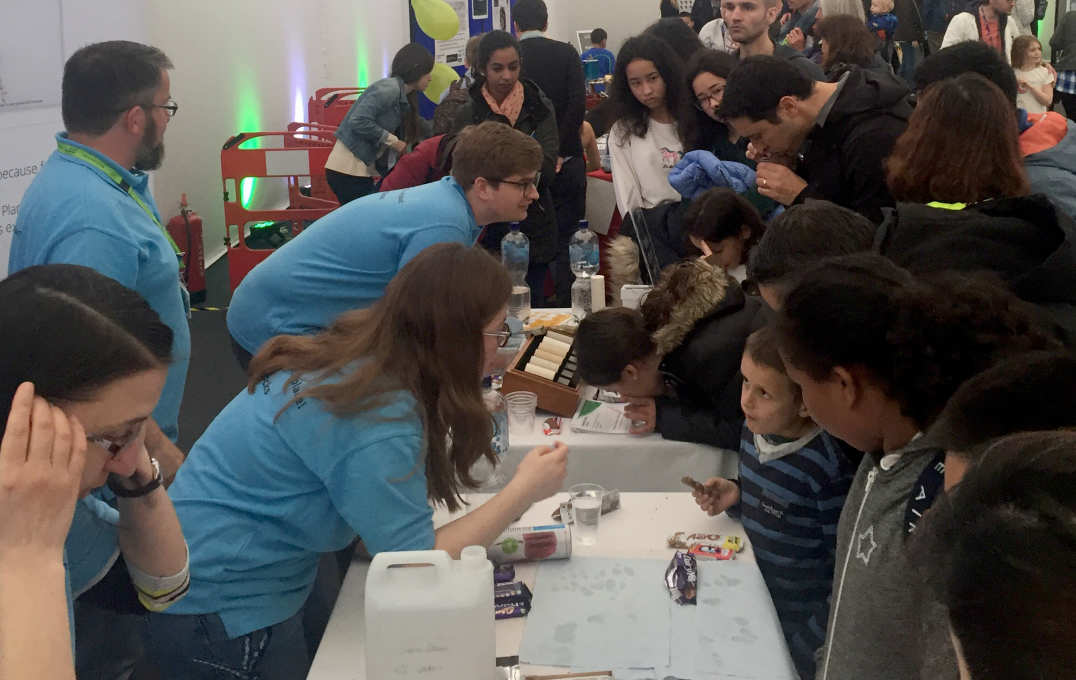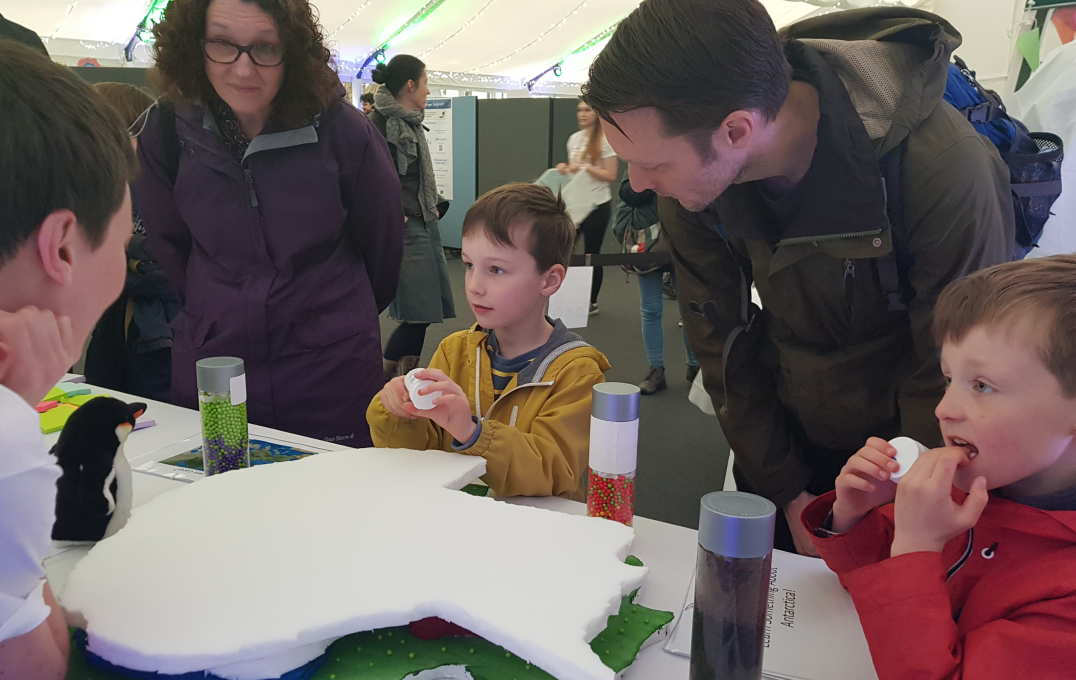Imperial Festival a gold mine of Earth Science & Engineering activities
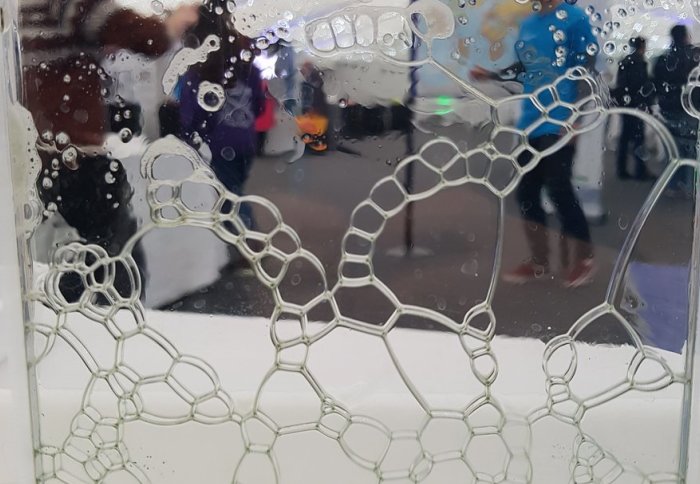
At the Imperial Festival this weekend, visitors panned for gold, caused volcanic eruptions and made their own elements.
The Imperial Festival took place on 28-29 April 2018, visitors took part in a range of activities led by researchers from the Department of Earth Science and Engineering.
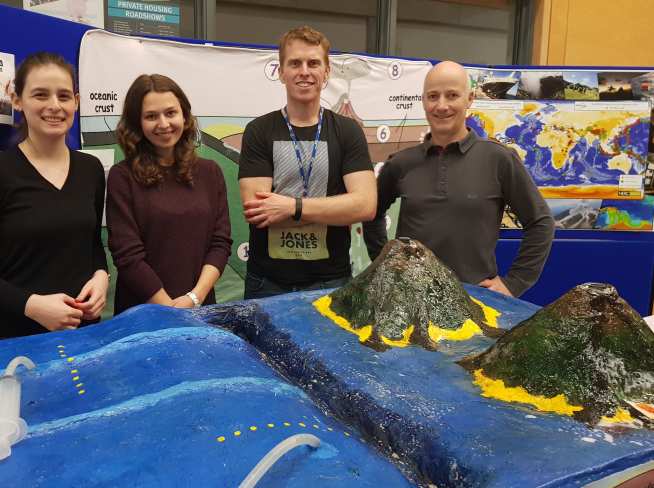
There was a volcanic eruption every fifteen minutes, thanks to the volunteers of the subduction volcanism exhibit from VoiLA Research Group (Volatiles in the Lesser Antilles). The VoiLA Group, funded by NERC, explained how water promotes mantle melting and fuels volcanoes, as part of their research to track the passage and quantity of water as it goes into the Lesser Antilles subduction system.
"It was a fantastic opportunity to engage with the public on our research and its importance", said Dr Richard Davy, a Research Associate in the department of Earth Science and Engineering. "We were able to show visitors not only a physical model of these processes, but allow people to directly interact with rock samples which are commonly found throughout such subduction zones."
The aims of the VoiLA project are to understand the role which water plays in the promotion of volcanism at subduction zones. Water transported into the Earth's mantle promotes the generation of magmas, so by understanding the quantity and distribution of water on the subducting plate, we are able to better explain the distribution and intensity of volcanism that occurs at many subduction zones around the world.
A team from the Advanced Minerals Processing Research Group got visitors thinking about minerals processing, including experiments with foam to demonstrate froth flotation, asking visitors to solve a puzzle about what minerals make up our phones, and panning for gold in the festival’s Engineering Zone “Enginuity”.
Also in the Festival’s Enginuity Zone, researchers from multiple research groups including the Qatar Carbonates and Carbon Storage Research Centre (QCCSRC) were on hand to bust common myths about carbon capture and storage, sharing how storing carbon dioxide deep underground in porous rocks can support the United Nations Framework Convention on Climate Change (UNFCCC) target to limit global temperature rise to 1.5?C. To demonstrate rock porosity and permeability, the team used a kitchen cupboard experiment using different types of chocolates and a glass of water - it was a popular experiment!
Other activities at the Festival included a lab experience where children donned lab coats, goggles and latex gloves to become climate change-conquering scientists for the day. It was designed and carried out by researchers from the Mass Spectrometry and Isotope Geochemistry (MAGIC) laboratory at Imperial, and supported by funds from the Department of Earth Science & Engineering and a public engagement grant from the Grantham Institute – Climate Change and the Environment.
Article text (excluding photos or graphics) © Imperial College London.
Photos and graphics subject to third party copyright used with permission or © Imperial College London.
Reporter
Victoria Murphy
Institute of Global Health Innovation
